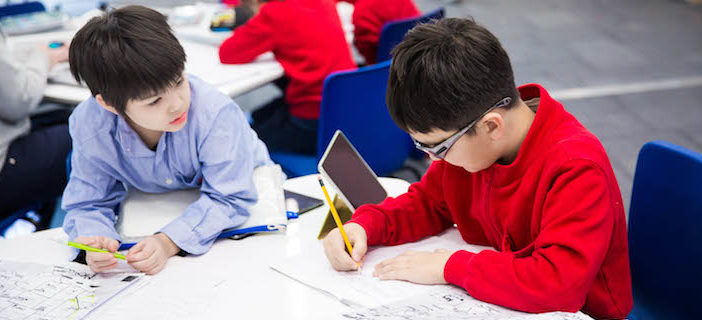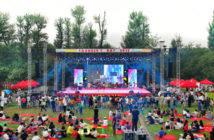In a time where information is instantaneously available via the Internet, the focus of education is shifting from simply providing students with pre-identified content to helping them understand, analyze, and utilize the information. Educators are recognizing the importance of developing much talked about ‘21st Century Skills’ such as creativity, innovation, critical thinking, collaboration, communication, and problem-solving. The important question parents need to ask is “how are these new needs being met in the classroom?”
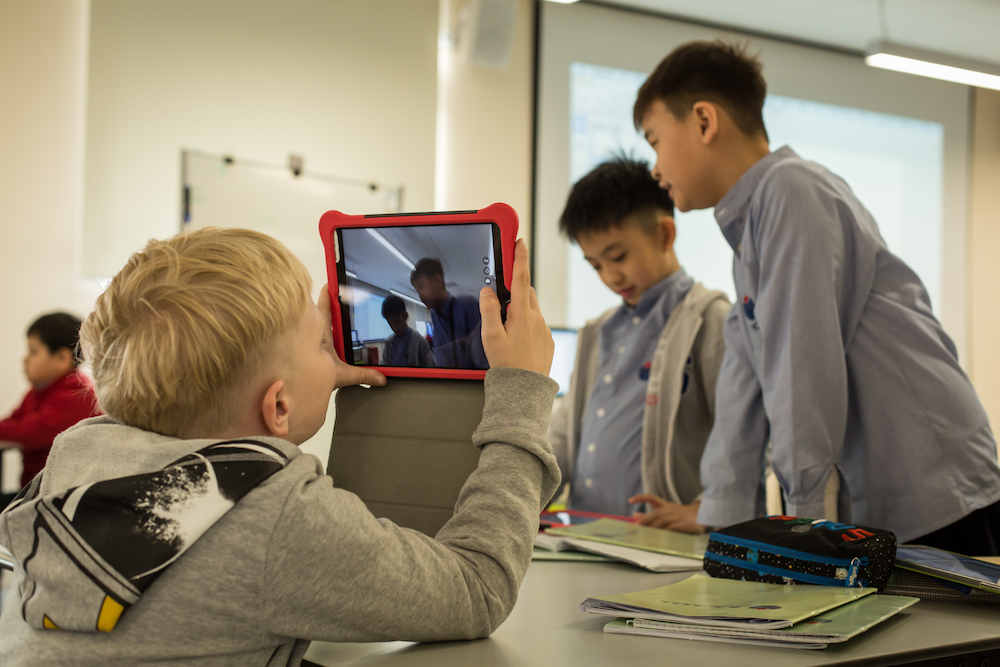
Technology is a key part of meeting changing educational demands
Building on their existing commitment to technology and the development of soft skills, Yew Chung International School of Beijing (YCIS) has taken an even bigger, more radical step towards fulfilling their commitment to educating “the whole person.” Last year, the Primary Years students at YCIS moved from their regular classrooms into newly-designed Learning Community spaces.
The entire second and third floors of the building now function as large, single class spaces for the Year 3, and Year 4 and 5 learning communities, respectively. Each class space has several dedicated work areas that flow into each other. Separated only by a few movable walls, each area is equipped with various different seating options and fitted with plenty of writing surfaces, as well as facilities for technology integration. Further renovations and expansions to the learning community spaces are planned for the future.
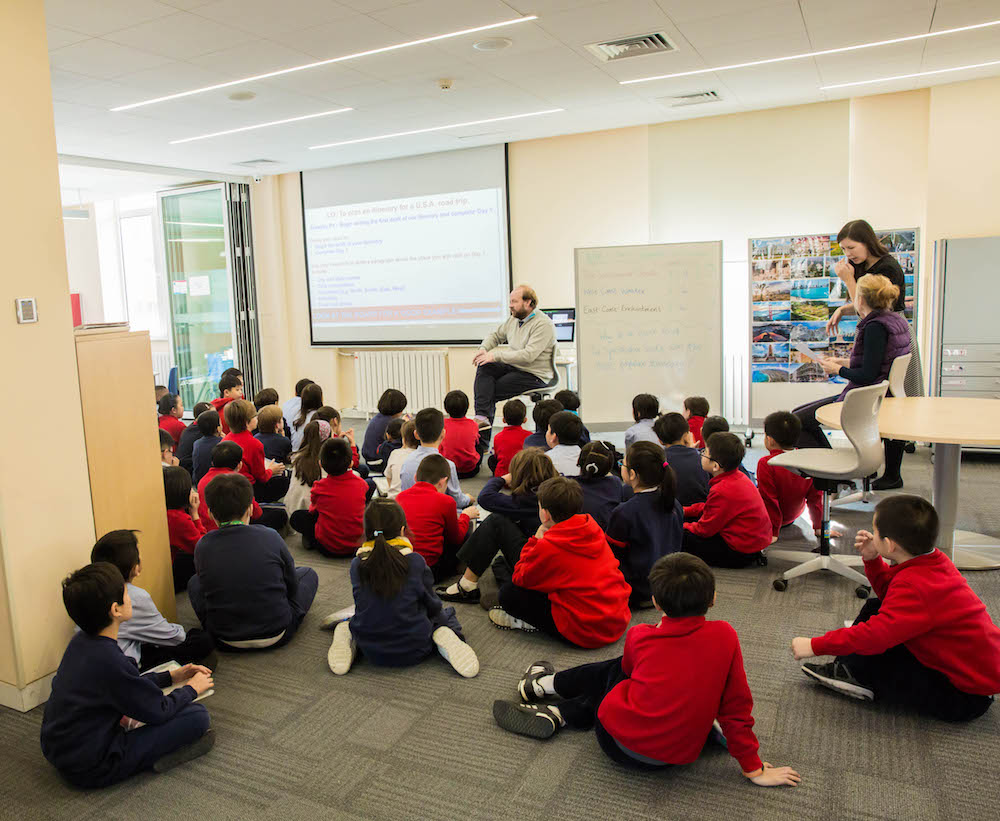
Learning community teachers give briefings and offer guidance on projects
The new classrooms have truly come a long way from the traditional “chalk-and-talk” space divided by walls and corridors. This is one of the reasons why Year 4 student, Ray Yi, loves his new class space. His day starts in the Confucian Forum area where all the Year 4 students gather and are co-taught or briefed by their teachers, who then divide them into groups for assignments. His teacher, Ms. Sian Edwards, explains that Ray and his classmates are currently learning about ancient Rome in Social Studies. “We are integrating that into the English lesson plan where they are writing stories with historical settings.” For their final project, the students are making their own storybook about Pompeii.
Ray and his group then head to the Knowledge Market area to plan out their project. They have been given an iPad as well as printed matter upon which they can base their project. The learning resources are available in various language levels so that EAL students in the group can participate equally. All of the seven Year 4 teachers, including the EAL teacher and Chinese co-teacher, are available for guidance.
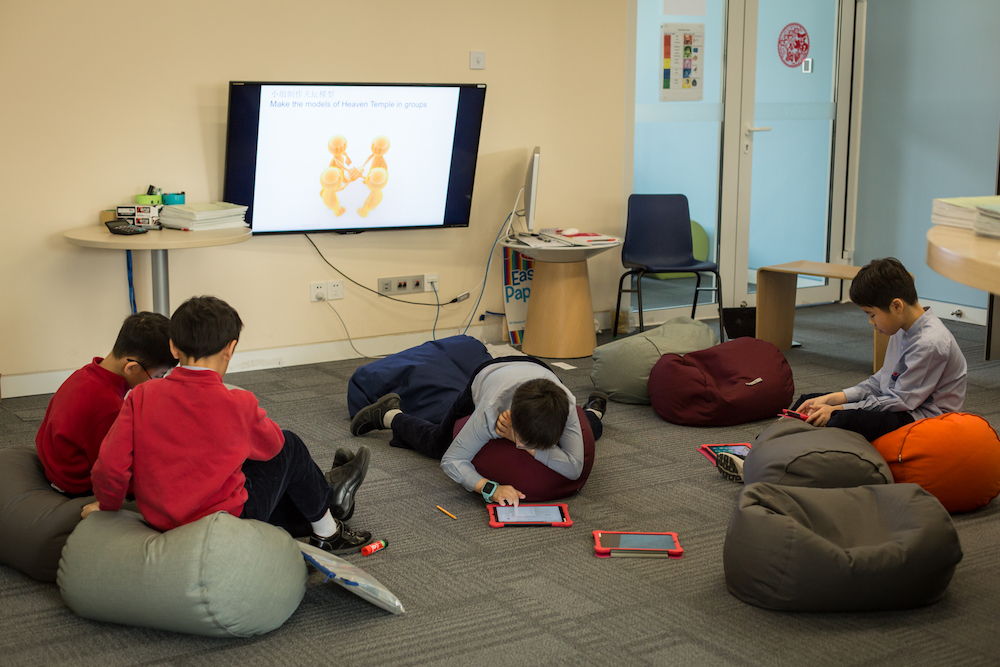
The Learning Community’s flexible space encourages creativity and freedom of thought
Students may also use the Book Nook to read up on their subject and the Maker’s Space area for hands-on activities. With easy access to creative materials and wipe-clean surfaces, the Maker’s Space is Ray’s favorite area. The space helps promote interdisciplinary teaching, explains Ms. Edwards as she leads us to the Apple TV lounge area where the teachers can use the technology for demonstration or instruction. The glass divider is given a slight push and the lounge opens up to a mini amphitheater space where Ray and his group may present their completed project to the class.
On the other side of the floor is the Teachers Collaboration area, which forms the backbone of the Learning Community. The concept emphasizes collaborative relationships not only amongst students, but also among teachers who use this space to share ideas, set goals, analyze methodologies, and measure progress. The class environment thus becomes a true community where children also learn from the collaborative and social behaviors modeled by the teachers.
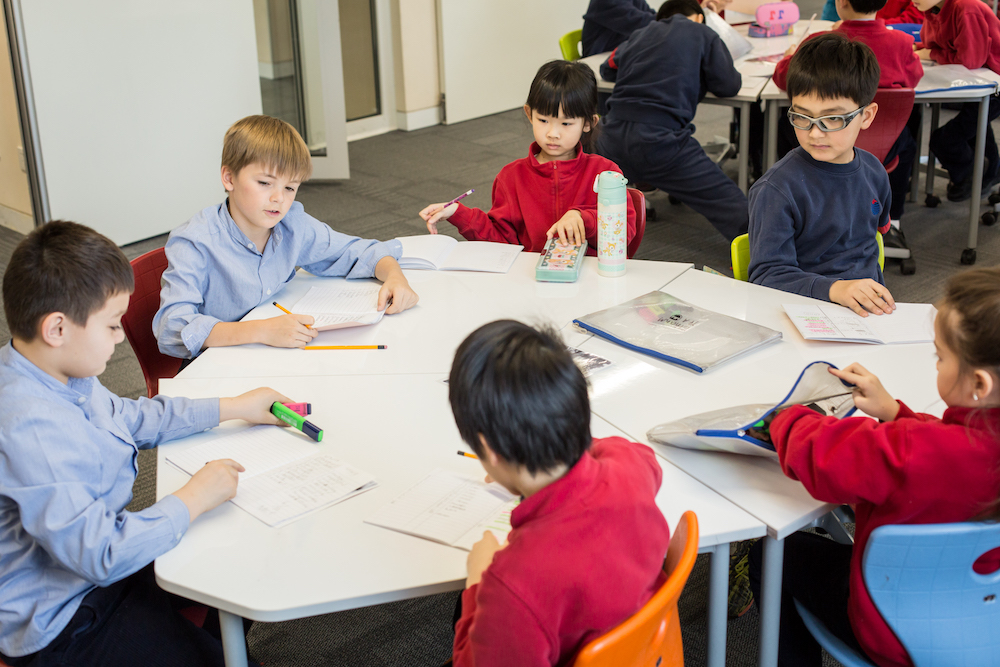
Year 4 student Grahm working on a project with his fellow students
What do parents think of the new class space and concept? Ms. Amber Christensen, mother of Year 4 Student Grahm Christensen, believes that surrounding environments have a great impact on learning. Her family regularly uses an extension of this concept at home. “The family comes together to discuss or introduce a topic. Each family member then moves on to address the family topic in their own way and/or level of appropriateness,” she explains. “I believe Learning Communities can facilitate the growth level of the students in a manner where they can learn together while also learning at their own level.”
Ms. Edwards elaborates: “Depending on language, personality, and skill level, teachers are able to personalize their teaching to meet the needs of each student as well as group them in ways where they can learn from each other. Ultimately, we want to build resilient, collaborative, open-minded, problem-solving students”, she concludes.
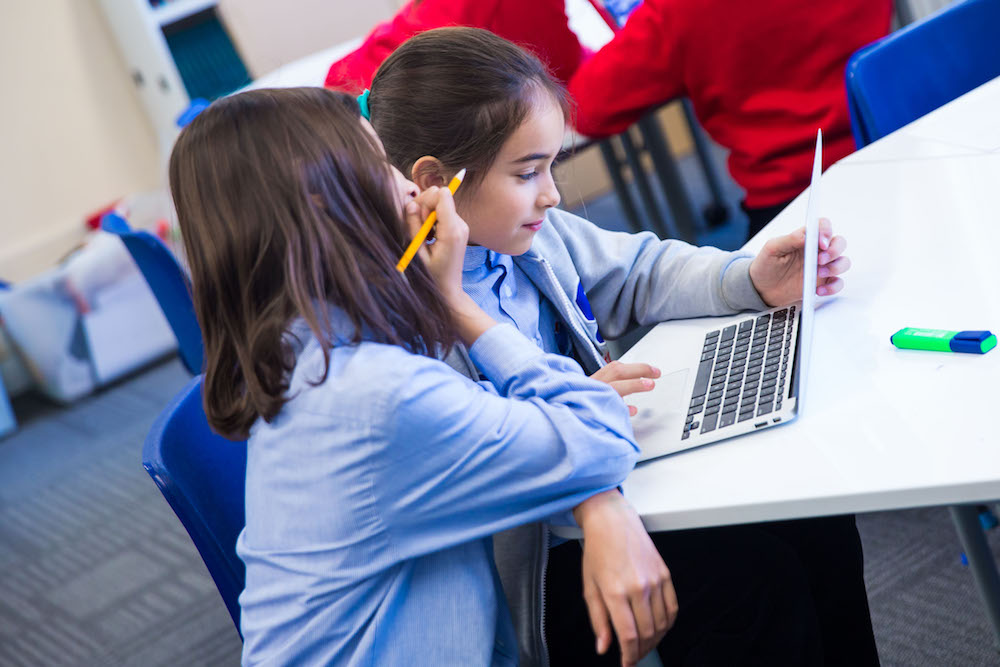
Kids have a say in how they learn, preparing them for the 21st-century workplace
Visitors to the YCIS Learning Community will notice the similarities with the office spaces created by some of the world’s most innovative companies, such as Google. Like these spaces, the Learning Community gives students and teachers the power to edit and make their own spaces within the school environment for collaborative work, blending work and play, art and science, digital and analog. Add to this a holistically engaged group of teachers delivering a modern curriculum that intentionally and elegantly weaves together classwork with diverse skills, and a true future-focused Learning Community is formed, poised to produce innovative young men and women who are ready to meet the demands of 21st-century workplaces.
If you would like to explore the YCIS Learning Community for yourself, join the YCIS Beijing Open Day on March 22. The event will feature a special panel discussion made up of both expert educators and students who will introduce their experiences as a part of the Years 6-8 Learning Community, including discussion of the Genius 100 Project – an innovative concept born originally at Google that allows students to delve deeper into their understanding of the curriculum through engagement in personal passion projects. Find more information and sign up details here.
This post is sponsored by YCIS Beijing.
Photos: Uni You

